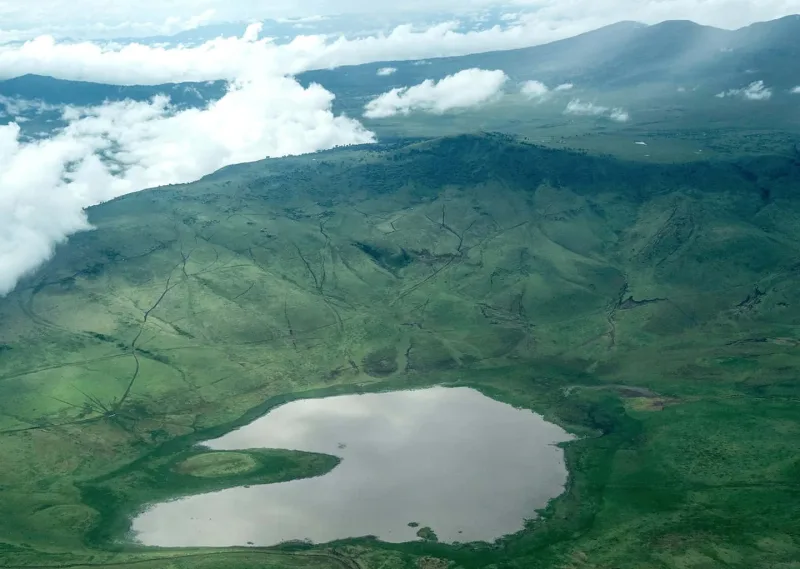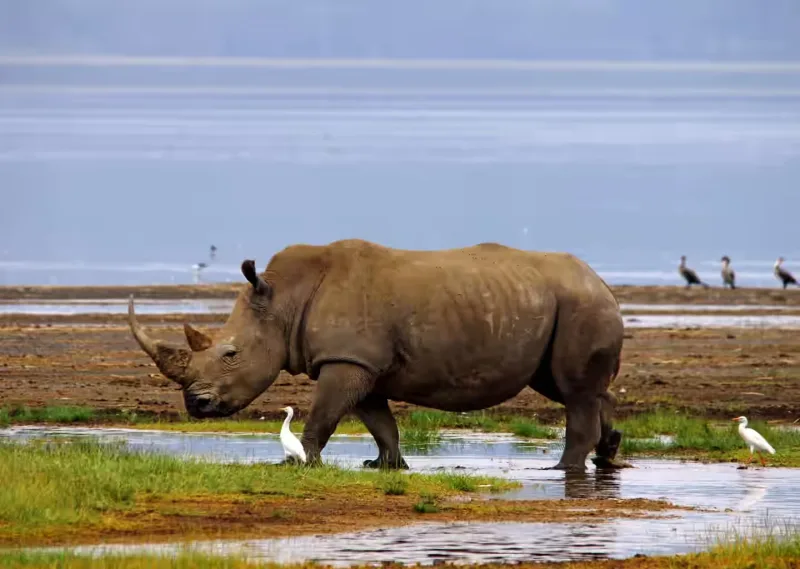Ngorongoro Crater
Discover The Crater
Why Visit Ngorongoro Crater
Natural Wonder of the World
The Ngorongoro Crater is a UNESCO World Heritage Site and the world’s largest intact volcanic caldera. It is home to over 25,000 animals, making it one of the densest wildlife areas in all of Africa.
Big Five in One Place
Few places on earth can match the Ngorongoro Crater when it comes to spotting the Big Five—lion, elephant, buffalo, leopard, and the rare black rhino—all within a relatively small and unique area.
Unique Ecosystem
The crater floor is a world of its own, with open savannah, acacia woodlands, a soda lake, and lush swamps. This mix of habitats supports an incredible diversity of animals and birdlife throughout the year.
Photography Paradise
From the rim, the views are breathtaking—the green walls of the crater encircle a wildlife-rich paradise. The dramatic landscapes and close-up encounters with wildlife make this a dream destination for photographers.
Cultural Experience
The Maasai people live along the crater’s edge, maintaining their traditional pastoral lifestyle. Visiting their villages offers a fascinating cultural experience and a chance to learn about one of East Africa’s most iconic tribes.
Best Time to Visit Ngorongoro Crater
The Ngorongoro Crater is a year-round destination, offering incredible wildlife viewing in every season. However, each time of the year brings a slightly different experience, so the “best” time often depends on what kind of safari adventure you are looking for.
December – March: The Green Season
During these months, the crater transforms into a lush, green paradise following the short rains. The scenery is at its most beautiful—vivid and fresh. Wildlife is abundant, and many animals are easier to spot as they graze on the new vegetation. This is also the calving season for many herbivores, particularly wildebeest and zebras, which means predators like lions and hyenas are highly active. It’s a spectacular time for photography, with vibrant landscapes and dramatic wildlife action.
June – September: The Dry Season
This period is considered the peak time to visit Ngorongoro Crater. The weather is cool and dry, making it comfortable for game drives. With less vegetation, animals gather around water sources on the crater floor, making them easier to observe. This is the ideal time for spotting the Big Five, including the elusive black rhino. Since this is the high season, expect more visitors, but the outstanding game viewing more than makes up for it.
October – November: The Short Rains
These months bring brief showers that refresh the landscape without disrupting safari activities. The rains give the crater a renewed lushness, and dust is reduced, creating clear and crisp views. This season is quieter compared to the peak months, meaning fewer crowds and a more peaceful experience while still offering excellent wildlife encounters.
👉 In summary: Ngorongoro Crater can be visited at any time of the year, but the dry season (June–September) is often considered the best for wildlife viewing. However, if you love dramatic scenery, newborn animals, and fewer crowds, the green season (December–March) and short rains (October–November) can be equally rewarding.
Safari Experience in Ngorongoro Crater
A safari in Ngorongoro Crater is unlike anywhere else in Africa. Often called the “Eighth Wonder of the World,” the crater offers a truly unique and intimate wildlife experience.
-
Game Drives on the Crater Floor
Descend 600 meters into the crater and enjoy game drives surrounded by breathtaking scenery. Here you can encounter over 25,000 animals, including lions, elephants, zebras, buffaloes, and the rare black rhino, all within a compact area that makes sightings easier and more rewarding. -
Big Five in One Day
Few places in the world give you the chance to spot the Big Five (lion, leopard, elephant, buffalo, and black rhino) in just one safari. The density of wildlife here makes Ngorongoro one of the best safari destinations on earth. -
Birdwatching Paradise
Ngorongoro is also home to over 500 bird species, from flamingos at Lake Magadi to ostriches, kori bustards, and crowned cranes. It’s a dream location for bird lovers and photographers. -
Cultural Encounters
A safari here is not only about wildlife. You can also visit nearby Maasai villages, where you’ll learn about traditional pastoral life and experience the rich culture of one of Tanzania’s most famous tribes. -
Tailor-Made Safaris
Whether you prefer a private safari, a family-friendly trip, or a luxury tour, experiences can be customized to match your preferences, combining Ngorongoro with other iconic destinations like Serengeti or Tarangire.




